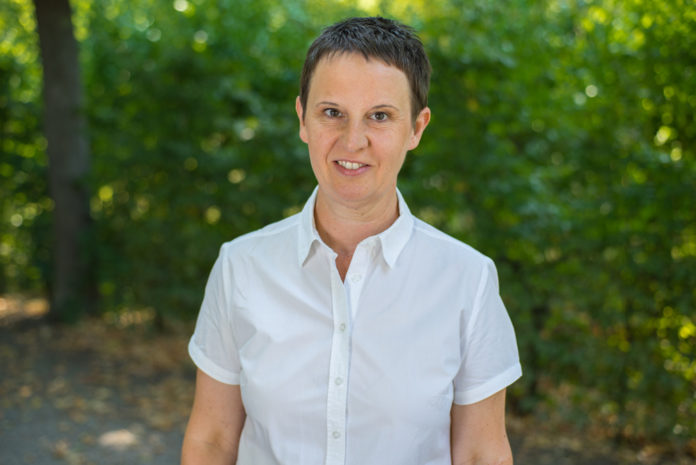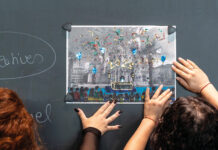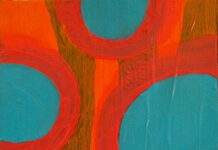
Open Source und Creative Commons
— Sonja Bettel
The digital age demands that we change our way of thinking, since ideas and works are our most important asset, and cannot be locked away. Open Source and Creative Commons are good solutions for revolutionising the free exchange of creative ideas.
On the whole, people who work ceatively only need to sell their ideas. According to the rules of the market economy, we need to protect our valuable assets well. We can therefore lock away records of our ideas and our works; we can make it impossible to copy our works through technical measures (or at least try to do so), or we can protect our ideas through legislation and contracts. In the digital age, all these measures have proven inadequate. Mechanisms designed to protect against copying have been hacked, and what were thought to be secure data safes have been broken open, contracts have been infringed and threats of punishment ignored. This is a source of frustration and anger for many creatives. They feel that they have been robbed, undervalued and exploited. Others have wondered whether their ideas really are theirs, and whether they alone should be able to profit from them. Don’t we all benefit when ideas are shared, when others can build on them and modify them? The Open Source and Free Culture movement likes to quote the English physicist and mathematician Isaac Newton on this subject: “If I have seen further, it is by standing on the shoulders of giants” (1676 in letter to his rival, Robert Hooke. Although Newton did not invent this image, as is explained in detail in the article “Standing on the shoulders of giants” in the Englishlanguage version of Wikipedia).
The pioneers of the movement promoting the free exchange of creative works come from the field of software development. Richard Stallman and Linus Torvalds are the best known representatives of the group, because the former introduced the GNU General Public License (GPL), while the latter initiated the Linux operating system. For Stallman, it was important that work with software should be conducted in a lively and open exchange between developers and users, as he experienced in the 1970s while he was working at the Massachusetts Institute of Technology. When in the early 1980s, companies started selling software with licences and secret source codes, he founded the GNU project and the free software movement. Free software has for several years usually been referred to as Open Source software, a term with which Richard Stallman doesn’t agree, since it reduces the importance of his focus on the source code, but that is another story. The term Open Source is now used for things other than software, but we’ll return to that topic later.
When the content industry began in the 1990s to react to digital copying opportunities and music exchange sites by introducing digital rights management and huge legal cases against so-called “music piracy”, there was resistance in the cultural field, which led to a solution approach known as Creative Commons. The initiative was founded in 2001 in the US by the professor of law Lawrence Lessig at the Stanford Law School, among others. At the end of 2002, the first licenses for more freedom of action in the use of creative works were published.
Creative Commons had such a liberating effect in that in 2004, the initiative was awarded the Goldene Nica at the Prix Ars Electronica in the Net Vision category. A sense of a new beginning followed, with which all areas of culture became infused. At the iSummit of the iCommons Initiative in Dubrovnik in June 2007, highly committed people from all over the world from the fields of knowledge, music, education, film, literature, law, software, development cooperation, art and much more came together to discuss how even more cultural works could be made freely available to even more people. Unfortunately, at the conference, the founder of Creative Commons, Lawrence Lessig, announced that he was quitting the project in order to devote his energy to fighting corruption, as a result of which the movement lost its charismatic leader figure. After one more iSummit, the initiative (perhaps for this reason), gently faded from view, although its protagonists remain active. Creative Commons might hardly be mentioned in the media these days, but it still exists and is flourishing. In the interim, 1.1 billion works have been published under a CC license. The licences are adapted to requirements in practice and to the various legislative frameworks. There is also a version designed for Austria. Separate platforms have been created for CC music, and the photo platform Flickr, over 870,000 photos with CC licenses are available. In literature, Creative Commons is still less widely used than in music or film, but the Canadian science fiction author Cory Doctorow demonstrates that a writer can made works freely available (online/ digitally), and still live from them (by selling printed books). Cory Doctorow does this out of conviction, but also points out the benefits for his work. His novel “Little Brother”, in which he describes a society, and its resistance fight, subjected to total surveillance in an atmosphere of terrorism hysteria, has been translated into countless languages by volunteers thanks to the freely available digital version, and has been disseminated in countries with limited civic rights like a political document. According to the author, this would never have been possible if the book had been published using “classic” methods.
Creative Commons also reacts to contemporary social developments. Currently, licenses and projects are being developed for Arab countries. There is also an ongoing project for the Black Lives Matter movement and a discussion as to how CC licenses can best be applied to models for 3D printers. Incidentally, 3D printers are one field in which the importance of the free exchange of creative work has not yet been sufficiently acknowledged. At the World Humanitarian Summit, the first UN conference on humanitarian aid, which was held at the end of May 2016 in Istanbul, the High Tech Humanitarians and other initiatives demonstrated how communities affected by disasters, wars and flight can benefit from Open Source software, Open Source design and 3D printers. They are producing building plans and 3D models for medical instruments, solar power systems, Open Street Map roadmaps, apps, databases and much more. Their premise is: if my work has been made possible through research funding programmes, donations or (voluntary) collaboration, then I can make its results available to others for free – particularly to those who are disadvantaged due to injustice in the world and an unequal distribution of resources. As with the Open Source software movement, the idea is increasingly taking root in other areas that generosity and cooperation benefits everyone involved.
There are an increasing number of examples that show how creative work, free culture and commercial activity do not need to be mutually exclusive, but can flexibly supplement each other. To take just one recent story: the Vienna design studio EOOS received a request to submit a piece of work to the “Orte für Menschen” (“Places for People”) exhibition at the 2016 architecture biennale in Vienna. EOOS decided to adapt the former customs office school (“Zollamtschule”) in the Erdberg district of Vienna, which is currently home to up to 600 asylum seekers. 18 different pieces of furniture were designed for use in common kitchens, shared living areas and rooms, which were built by the residents in the workshop set up in the local area and financed by donations. In contrast to common practice in the field of furniture design, the designs and building plans for this Social Furniture were not protected by copyright. Entirely in the spirit of Open Source, they were published in a separately produced catalogue under a Creative Commons license, Attribution-NonCommercial-ShareAlike CC BY-NC-SA, so that other initiatives could copy or change them, and use them (for noncommercial purposes) in communities.
The author
Sonja Bettel is a journalist and author, focussing on science, digital technologies/network policies and society. She works for Radio Ö1, Deutschlandradio Kultur, die Furche, LebensArt, upgrade, LandLuft and book publications, among others. Since the 1990s, she has observed and documented the developments around free networks, free culture and free knowledge.











